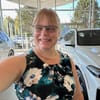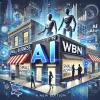
By Elke Porter | WBN Ai | June 9, 2025
Subscription to WBN and being a Writer is FREE!
The quantum revolution began in 1900 when Max Planck introduced energy quantization to explain blackbody radiation, marking quantum mechanics' birth. The foundational year of 1925 proved pivotal when Werner Heisenberg published his groundbreaking "Umdeutung" paper, reinterpreting quantum mechanics using non-commutative algebra. That same year, Heisenberg, Max Born, and Pascual Jordan developed matrix mechanics formulation, while George Uhlenbeck and Samuel Goudsmit postulated electron spin existence.
Erwin Schrödinger followed in 1926 with his wave equation, using Louis de Broglie's 1923 electron wave postulate. Max Born then provided the statistical interpretation of wavefunctions. Werner Heisenberg formulated the uncertainty principle in 1927, the same year Niels Bohr and Heisenberg developed the Copenhagen interpretation.
Quantum tunneling emerged from Friedrich Hund's 1925 work on electron behavior in molecules, later applied to nuclear physics. The famous Einstein-Podolsky-Rosen paradox of 1935 introduced quantum entanglement as a "spooky action at a distance," challenging quantum mechanics' completeness. Schrödinger's cat thought experiment that same year illustrated superposition problems.
Early experimental validation came through Otto Stern and Walther Gerlach's 1922 experiment detecting discrete angular momentum values, Thomas Young's 1801 double-slit experiment revealing wave-particle duality, and Arthur Compton's 1922 X-ray scattering demonstrating photon particle nature.
Quantum in Wartime
During World War II, quantum mechanics proved essential for military technology. The Manhattan Project, led by J. Robert Oppenheimer from 1942-1946, relied heavily on quantum mechanical principles for nuclear fission understanding. Enrico Fermi's team created the first artificial self-sustaining nuclear chain reaction (Chicago Pile-1) on December 2, 1942. The project culminated in the Trinity test on July 16, 1945, demonstrating quantum tunneling effects Oppenheimer had predicted.
Beyond nuclear weapons, quantum theory advanced radar technology and semiconductor research. The theoretical groundwork for transistors emerged from quantum mechanics understanding of electron behavior in materials. Richard Feynman's path integral formulation in 1948 and quantum electrodynamics development by Feynman, Julian Schwinger, and Sin-Itiro Tomonaga revolutionized post-war physics.
The Quantum Future
The second quantum revolution is underway. Alain Aspect's 1980-1982 experiments verified quantum entanglement, winning him the 2022 Nobel Prize alongside John Clauser and Anton Zeilinger. Peter Shor's 1997 algorithm demonstrated quantum computing's potential for factoring large numbers, threatening current cryptography.
Modern quantum computers from IBM, Google, and others are achieving "quantum advantage" in specific problems. In 2001, researchers physically implemented Shor's algorithm using NMR, factoring 15 into 3×5 with seven qubits. Aaron O'Connell created the first quantum machine in 2009, applying quantum mechanics to macroscopic objects.
Mainstream quantum adoption likely awaits the 2030s-2040s when error-corrected quantum computers become practical. This technology promises revolutionary advances in drug discovery through molecular modeling, financial optimization, artificial intelligence enhancement, and cryptography transformation. Quantum communication networks could provide unhackable information transfer, while quantum sensors might detect gravitational waves or enable precise medical imaging.
The quantum future suggests computational problems considered impossible today—like simulating complex chemical reactions for new medicines or optimizing global supply chains—becoming routine. However, this power threatens current encryption, necessitating quantum-resistant security protocols.
From Planck's 1900 quantum hypothesis through today's quantum computers, this field continues reshaping reality's understanding and technology's possibilities, promising a world where quantum effects drive everyday technological solutions.
#Quantum Physics #Quantum Computing #Quantum Mechanics #Physics History #Quantum Revolution #Future Of Science #WBN Ai #Elke Porter
Connect with Elke at Westcoast German Media or on LinkedIn: Elke Porter or contact her on WhatsApp: +1 604 828 8788


